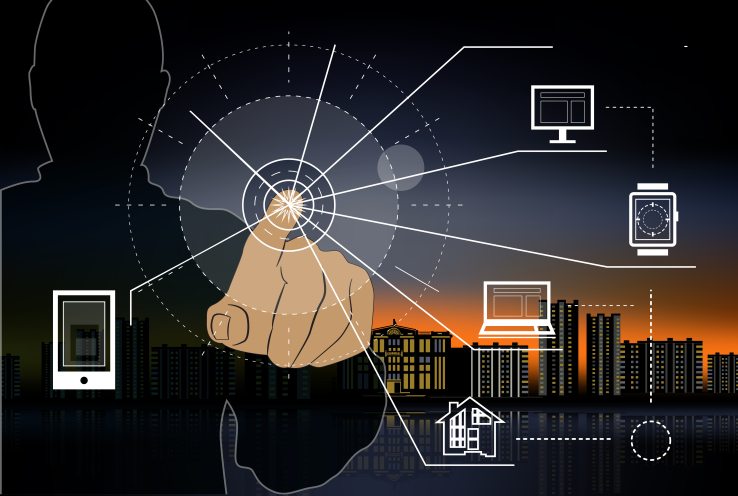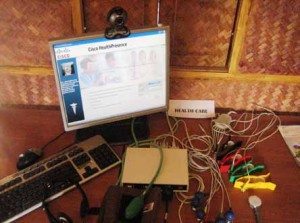With Internet of Things, also known as IoT, making sharp penetrations into the Indian scheme of things, various newer opportunities are being created across diverse sectors. One such sector is Indian healthcare which currently differentiates treatments based on the financial condition of patients. Also, with lack of proper availability of full-fledged doctors, especially in the tier-2 and rural regions, healthcare requires a much-needed shot in the arm through IoT.
Well, the good news is that experts; both IoT solution engineers and medical professionals are optimistic about witnessing a new revolution in Indian healthcare, a focal area is in the mitigation of shortage of doctors. As per Medical Council of India (MCI) statistics, the doctor-people ratio in India was a shocking 1:1681 in 2016.
In this regard, we spoke to experts who presented their optimism about IoT, and related concepts such as Artificial Intelligence (AI), Machine Learning (ML), and smart concepts playing a vital role in taking the initial level burden off both doctors, and patients overall.
Rural healthcare – Machine Learning (ML), and smart concepts playing a vital role in taking the initi
Undoubtedly, deployment of healthcare solutions in rural geographies is even today the biggest challenge for the government of India. Also, with as much as 70% of the Indian population present in tier-2 and rural areas with abysmal healthcare facilities, there is always a risk of an increase in mortality rates.

As per Bastin Robin- chief data scientist at Bangalore-based Hash Research Labs, effective mitigation techniques to the above scenario are Remote Patient Monitoring (RPM) devices injected with a dose of IoT. Here, RPM hardware can start from the most basic level which is blood pressure monitors, glucose meters, and other wearables that are easy to not only use but also monitor.
Bastin believes that these devices can be engineered to send real-time data to clinics/hospitals via the internet. “Now it’s easy for the doctors to understand the pattern and trends of patients’ health data which can make remote consultation possible up to certain limits”, states Bastin.
Bastin also feels that RPM would potentially serve as a blessing in disguise as far as health monitoring of the elderly and the chronically/terminally ill patients are concerned. Bastin opines that deployment of RPM along with Electronic Health Records (EHR) could result in financial savings (for the healthcare industry) amounting to as much as $700 billion in a time span of 15 years.
More smart clinics = increased availability of doctors for patients
Now, the concept of smart clinics should not sound alien to you. These are already functional in most of the western economies. Smart Clinics help when it comes to conducting tests without human intervention, and even communicating these directly to Doctors/patients.
This smart process saves valuable time of doctors as they can directly see ‘categorised’ reports as dashboards. This includes data of tests performed, the exact diagnosis, and the next steps to be followed by the patients. This directly translates into informed decisions on the part of doctors, and elimination of the possibilities of reports of patients getting interchanged.
Most importantly doctors have evaluable time in their hands to see more patients in the same amount of time.
Hence, micromanagement of tasks can be effectively handled by IoT and related smart concepts, thereby making doctors more accessible to the masses.
You are empowered to diagnose diseases on your own
Experts are of the view that awareness creation and medical empowerment of patients will be the biggest revolution of AI, ML, and smart concepts.

“An example here would be a smart home camera that scans facial expressions for likely symptoms and passes on this data both to users as well as doctors, in the case of likely diseases”, states Ashissh Raichura – Founder at Scanbo.
This scenario would undoubtedly put the initial level of healthcare in the hands of people themselves rather than they having to visit doctors for diagnosis and having to wait long hours just to collect medical reports.
Doctors are off-loaded here and can concentrate more on actually treating the patients, with an emotional bond. However, do remember that smart diagnosis (at the home level itself) can be achieved only up to a limit; but even this is significant from a doctor’s viewpoint.
We will see the smart healthcare system in India very soon
“In India, the above smart diagnosis at the home level would happen very soon. The smart solutions are also expected to be cheaper. Once AI starts evolving, we will also move towards value-oriented healthcare, from a pricy healthcare system”, adds Ashissh.
Telemedicine will take doctors to rural areas enmasse
As per Suniel Kumar G, Founder and MD of Bangalore-based Nexiot Technologies that is focussed on IoT-based end-to-end solutions across sectors including healthcare, RPM will boost the reachability of telemedicine especially throughout rural geographies.
Suniel advices IoT solution providers (and medical professionals) to apply both IoT-driven smart concepts and Data Sciences in tandem so that the accessibility to doctors gets enhanced which in turn results in mitigation of the issue of shortage of doctor numbers.
“Patient Monitoring, Diagnostics & Assets Monitoring are very potential areas of IoT for healthcare”, opines Suniel.
Did you know, optimisation of physical hospital assets also plays a big role here
This is a more generalised variant of IoT in healthcare; deployment of smart concepts over already existing healthcare equipment also goes a long way in enabling doctors/surgeons automate processes such as diagnosis, and communication of critical illnesses directly to patients.
Here, tons of generated data is transmitted through the cloud where analytics occur and refined exact data is sent to patients through channels such as smartphone apps. Doctors also get to have a detailed look at this data and thereby decide on the next course of action without having to waste valuable time in taking informed decisions.
An illustration here is the concept of smart beds that can track conditions of patients real-time, thereby helping doctors prepare better for even contingencies.
“This transforms not only patient’s life, but also reduces the burden on doctors by supplying them with essential information as and when required efficiently”, states Jagdish Harsh, CMD Mobiloitte
“In lots of cases, smart beds upload info that can be accessed by doctors even at remote locations. This information can then be used by Doctors to monitor patients’ health. Medication required by patients can also be determined smartly”, adds Jagdish.
“Teleradiology Solutions in conjunctions with Cloud based PACS systems are used to store and view the conventional XRay / MRI Scanner Images through internet. Specialist doctors will review these images wherever they are, create and share the reports with appropriate diagnostic observations. This will help rural diagnostic centers scan the patients and transfer the images for specialists’ referrals and consultations”, states Rajendra Kurady; co-founder and ceo at Bangalore-based RTWO Healthcare Solutions. Rajendra specialises in Healthcare IT.
IoT will also potentially motivate doctors
Apart from helping doctors save time and thereby attend to more number of patients over a given time period, smart concepts such as AI and ML will also help doctors smartly diagnose patients which improves their success level and also motivates them to carry out diagnosis on an increased scale.
Experts believe that AI and ML will improve the overall diagnostics, and change the entire way in which care is afforded to patients.
“You have an MRI or an x-ray and a computer helps the radiologist detect any problems that could be too small for a human to see.” visualises Bastin.
In this process, even doctors (those serving the rural sectors especially) would be educated better. A smart system could automatically look at patients’ medical records and the family history and then use this data to track recent medical researches and then suggest an advanced treatment protocols to doctors that is custom-made according to the patients’ medical records. This way, it becomes a win-win situation for both the patients as well as doctors.
A well-equipped doctor would definitely put in extra effort to see that he/she attends to more patients; thereby mitigating the shortage level.
“By combining vast amounts of patient data with artificial intelligence, we’re beginning to be able to predict illnesses before they’ve even developed. If machines can see a life-threatening illness before it strikes, this has the potential to save countless lives.” signs-off Bastin.
Check out a real-world illustration
Rajendra was kind enough to share a real-world use case. Rajendra quotes the illustration of a super-speciality hospital (names not disclosed) located in Mangalore (in coastal Karnataka) that saw many patients being referred from South Kerala.
Rajendra observes that nearly 70% of these referral cases were found to be false alarms, not requiring referral all the time, at the Mangalore hospital. However, early diagnosis/interventions were required here. As the hospital in South Kerala did not seem to be well equipped, Tele-ICU solutions are the need of the hour in these situations.
Remote consultations also play a key role in enabling patients save valuable resources, and doctors valuable time. This is a clear indicator of the usefulness of IoT-driven smart concepts in mitigating shortage of doctors in rural India.
For now have a little patience
With IoT startups mushrooming, experts feel that research in improving the Indian healthcare system has definitely received a boost. However, it would take some time for these solutions to make it into the real-world, as these are under the test phase for now.
If you are frustrated with the current healthcare system now, just wait for another 5 years, it would do no harm to guess the silence before the storm.
Written by Rahul R, Senior Technical Journalist at EFY










